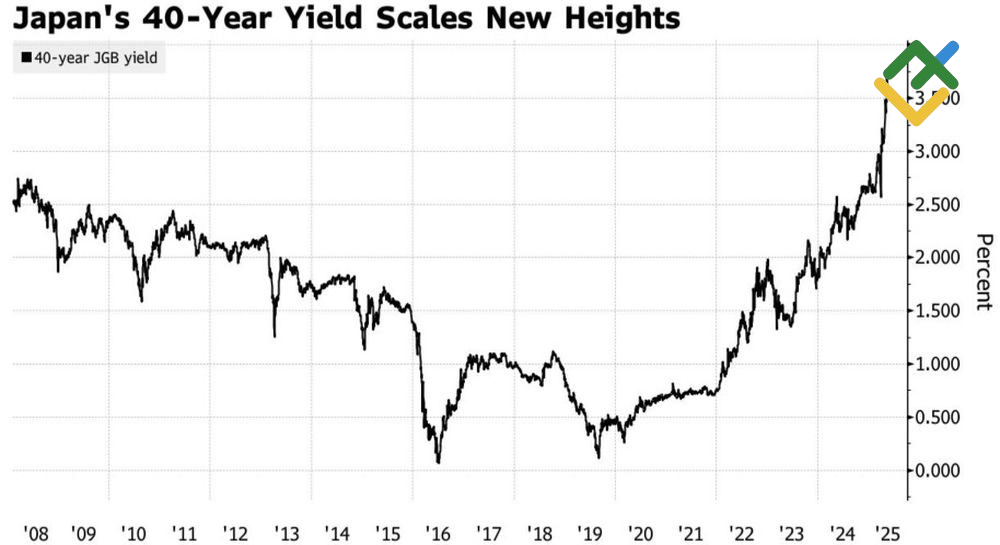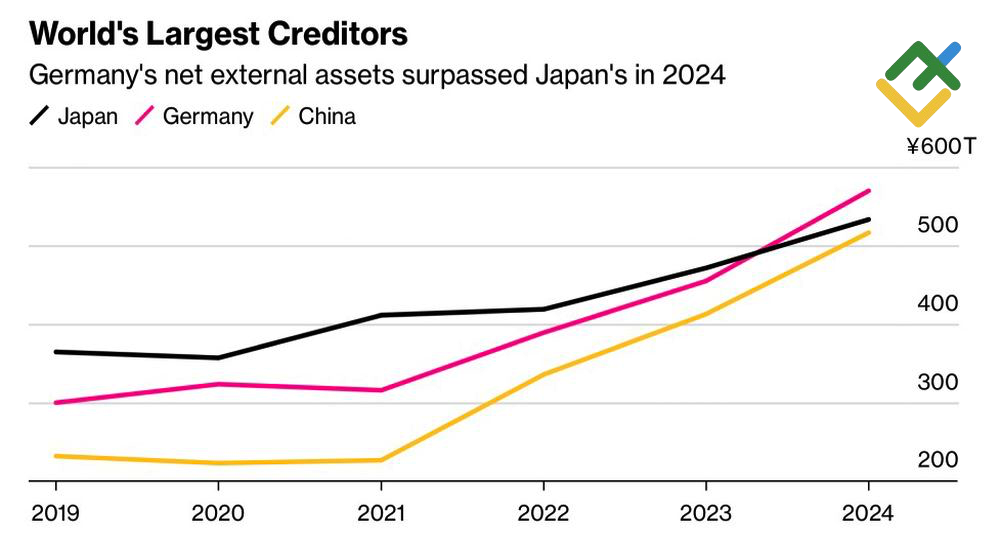
Significant changes in financial markets have led to speculation that interest rate hikes may no longer support national currencies. The yen’s strength is primarily attributable to its status as a safe-haven currency. Let’s discuss this topic and make a trading plan for the USDJPY pair.
The article covers the following subjects:
Major Takeaways
- The BoJ has no plans to abandon rate hikes.
- Japan has lost its status as the world’s largest creditor.
- Falling bond yields are putting pressure on the yen.
- Short trades on the USDJPY pair can be opened on a rebound from 144.5 or 145.3.
Weekly Fundamental Forecast for Yen
While market movements are often deemed chaotic, they can be predicted. When Fed officials begin to harbor doubts about a rate cut in September, the US dollar typically declines. When Bank of Japan Governor Kazuo Ueda says the Japanese regulator will continue its monetary policy normalization if the data aligns with its expectations, the USDJPY rate rises. Meanwhile, the acceleration of inflation in Japan from 3.2% to 3.5% supports the resumption of monetary policy tightening. At first glance, it may seem quite odd, but investors are simply reevaluating long-standing principles from a fresh perspective.
The financial challenges in the US have sent shockwaves around the globe. Japan’s 30-year and 40-year bond yields have reached unprecedented levels, posing significant hurdles for the government in financing its substantial public debt. Although Kazuo Ueda declined to comment on the market situation, the head of the BoJ stated that he was monitoring it closely. Rumors that Tokyo would reduce its issuance of long-term securities in favor of medium-term ones calmed investor concerns. Yields decreased, propelling the USDJPY pair upward.
Japan’s 40-Year Bond Yield
Source: Bloomberg.
Japan has agreed to a temporary halt in its trade disputes with the US and is currently engaged in negotiations to reduce tariffs. At the same time, the nation’s current account surplus is diminishing. As a result, Japan lost its status as the world’s largest creditor for the first time in 34 years. Its net external assets grew by 13% to ¥533 trillion in 2024. Germany ranks first with ¥569.7 trillion, and China ranks third with ¥516.3 trillion.
Net External Assets
Source: Bloomberg.
On paper, the euro may become a preferred funding currency and a sought-after safe-haven asset. The confidence in the US dollar and US Treasury bond yields has been undermined, creating an opportunity to seize the market share that has been lost. The reduction in the foreign trade surplus is unfavorable for the yen, as the economy is weakening. However, the prevailing “Sell America” strategy has spurred USDJPY quotes. Notably, this surge is being viewed merely as an upward pullback.
Despite Kazuo Ueda’s efforts to revive the hope for a continuation of the monetary policy normalization cycle, it is unlikely that the overnight rate will be raised before September. In light of current market conditions, this development bodes well for the yen. While the stabilization of the Japanese debt market may exert some pressure, the uncertainty surrounding the US administration’s policy is a more significant factor as it propels high demand for safe-haven assets.
Weekly USDJPY Trading Plan
The USDJPY pair is still trading in a downtrend, with long-term targets at 140 and 135. The upward pullback provides an excellent opportunity to establish short positions. A rebound from 144.5 or 145.3, or the pair’s failure to hold above 143.8, will serve as triggers for selling.
This forecast is based on the analysis of fundamental factors, including official statements from financial institutions and regulators, various geopolitical and economic developments, and statistical data. Historical market data are also considered.
Price chart of USDJPY in real time mode
The content of this article reflects the author’s opinion and does not necessarily reflect the official position of LiteFinance broker. The material published on this page is provided for informational purposes only and should not be considered as the provision of investment advice for the purposes of Directive 2014/65/EU.
According to copyright law, this article is considered intellectual property, which includes a prohibition on copying and distributing it without consent.
{{value}} ( {{count}} {{title}} )
This post is originally published on LITEFINANCE.








